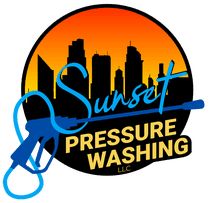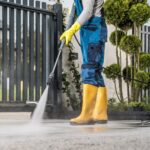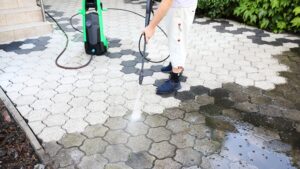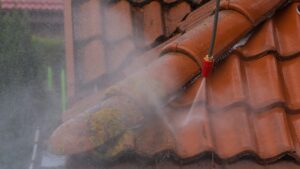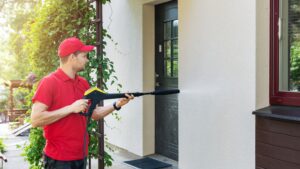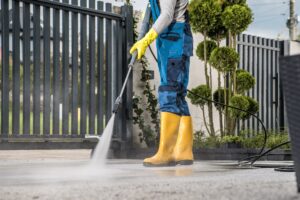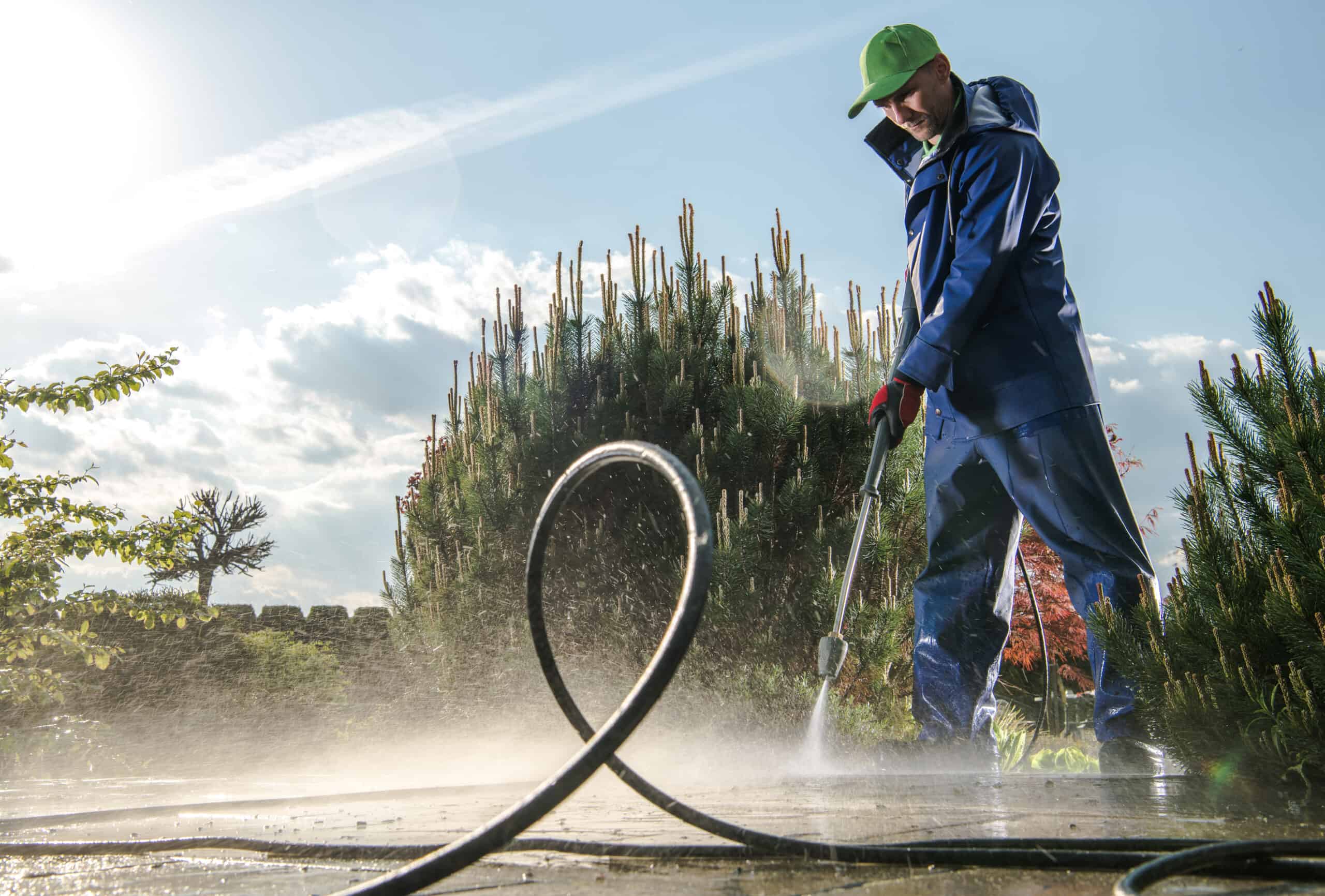
Transform Your Driveway: Pressure Washing Best Practices
Pressure washing is a common method of cleaning driveways that uses high-pressure water jets to remove dirt, grime, oil, and grime from surfaces. Pressure washing is an effective way to restore the appearance of your driveway and improve its overall durability. This method is especially useful when traditional cleaning methods like scrubbing and sweeping are ineffective.
A driveway becomes dirty and worn over time. Many homeowners turn to pressure washing to prolong the lifespan of their driveways. It’s an affordable solution that can help restore your driveway and increase your home’s curb appeal. Pressure washing is an effective and efficient way to clean and restore the appearance of your driveway. However, it’s important to take proper precautions, use the correct equipment, and follow best practices to clean your driveway safely, thoroughly, and effectively. When properly prepared and executed, pressure washing can last for months.
If this cleaning method is something you’re considering for the first time, here’s a beginner’s guide on how to pressure wash a driveway.
What Do You Need When Pressure Washing a Driveway?
Before we discuss how to pressure wash a concrete driveway or how to pressure wash a brick driveway, you need to gather all the supplies needed for this cleaning method. Having the right equipment and products is crucial if you want to properly pressure wash a driveway. Here’s what you need:
1. Pressure Washer
Pressure washers work by forcing water out of the hose at extremely high speed and pressure, removing dirt from the surface of your driveway. This can make maintaining your driveway much easier over time and improve its overall appearance.
You need a high-quality pressure washer that can deliver about 3,000 pounds per square inch (PSI). The higher the PSI, the faster and more effectively you can clean your driveway.
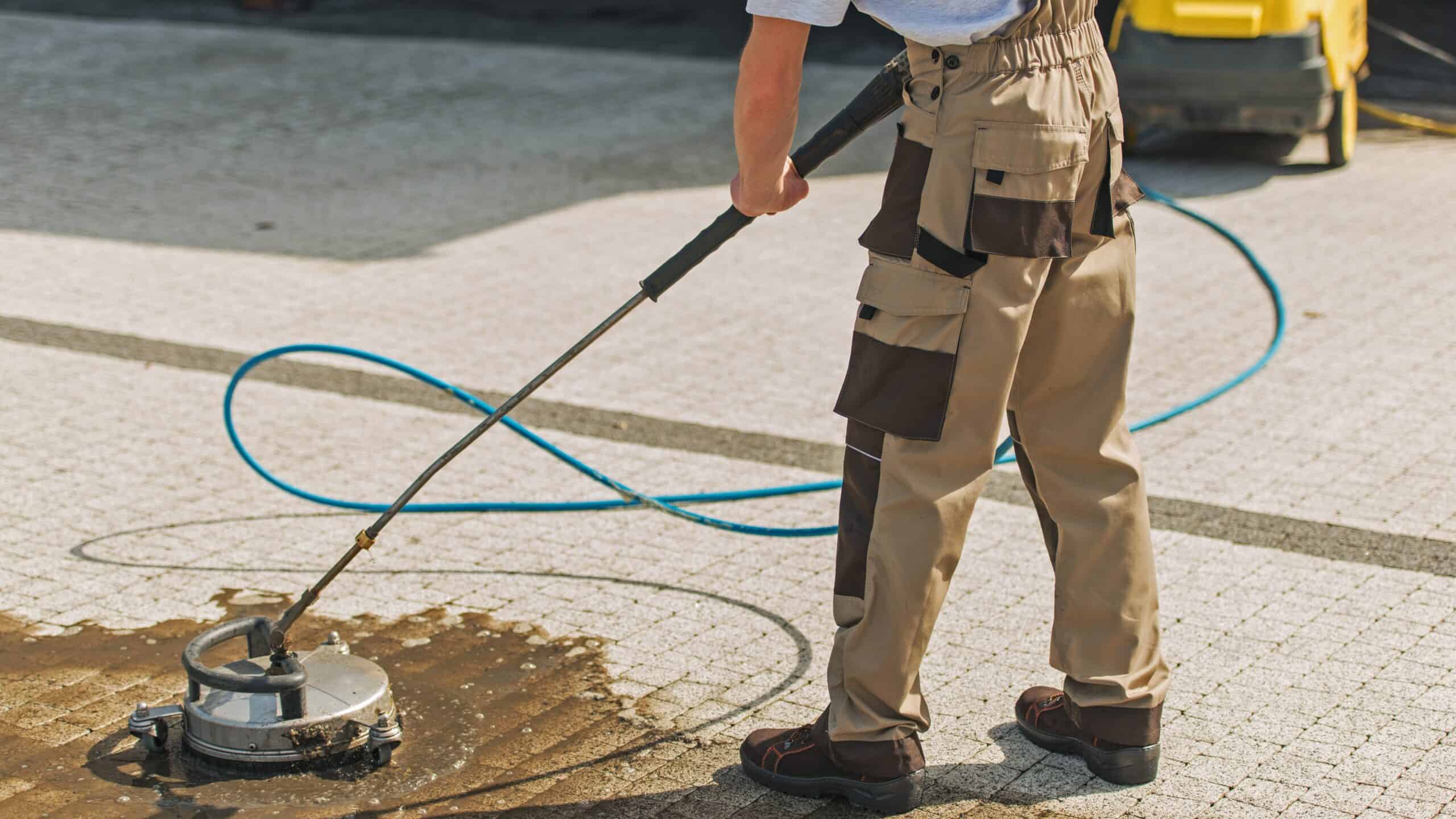
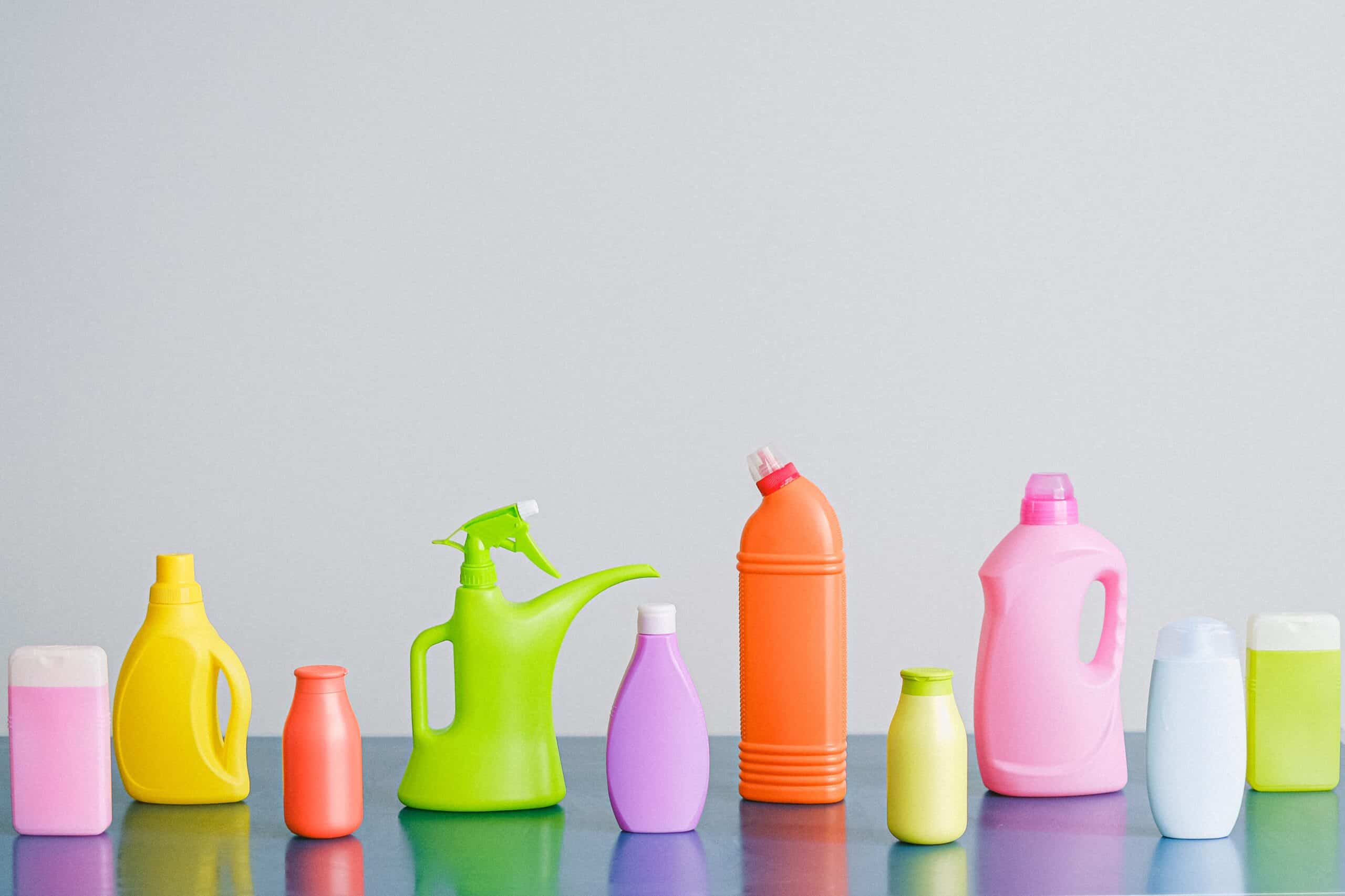
2. Use Cleaning Agents When Pressure Washing a Driveway
While pressurized water can be enough to clean your driveway, cleaning agents such as soap or detergent help loosen up all the dirt, grime, and grease. They’re also great for targeting stubborn stains. Choose a cleaning agent that is specifically made for your driveway pressure washer.
Cleaning agents are key to effectively pressure washing your driveway. Choosing the right cleaning product will greatly improve the results achieved. Whether you choose strong detergents, bleach, or eco-friendly options, it’s important to use these cleaning products carefully to return your driveway to its former glory without causing any damage.
3. Pressure Washer Hose
When it comes to choosing the ideal pressure washer for your driveway cleaning task, there are a few things to consider. First, make sure the faucet is compatible with the make and model of your pressure washer. Second, the diameter of the hose must be large enough to handle the pressure washer’s water flow. Third, it must be long enough to reach every corner of the cleaning area and maneuverable enough for easy handling.
If a pressure washer hose is out of the budget, you can instead use a garden hose. Preferably, the hose should be 50 feet long to provide you with a wide range of motion.

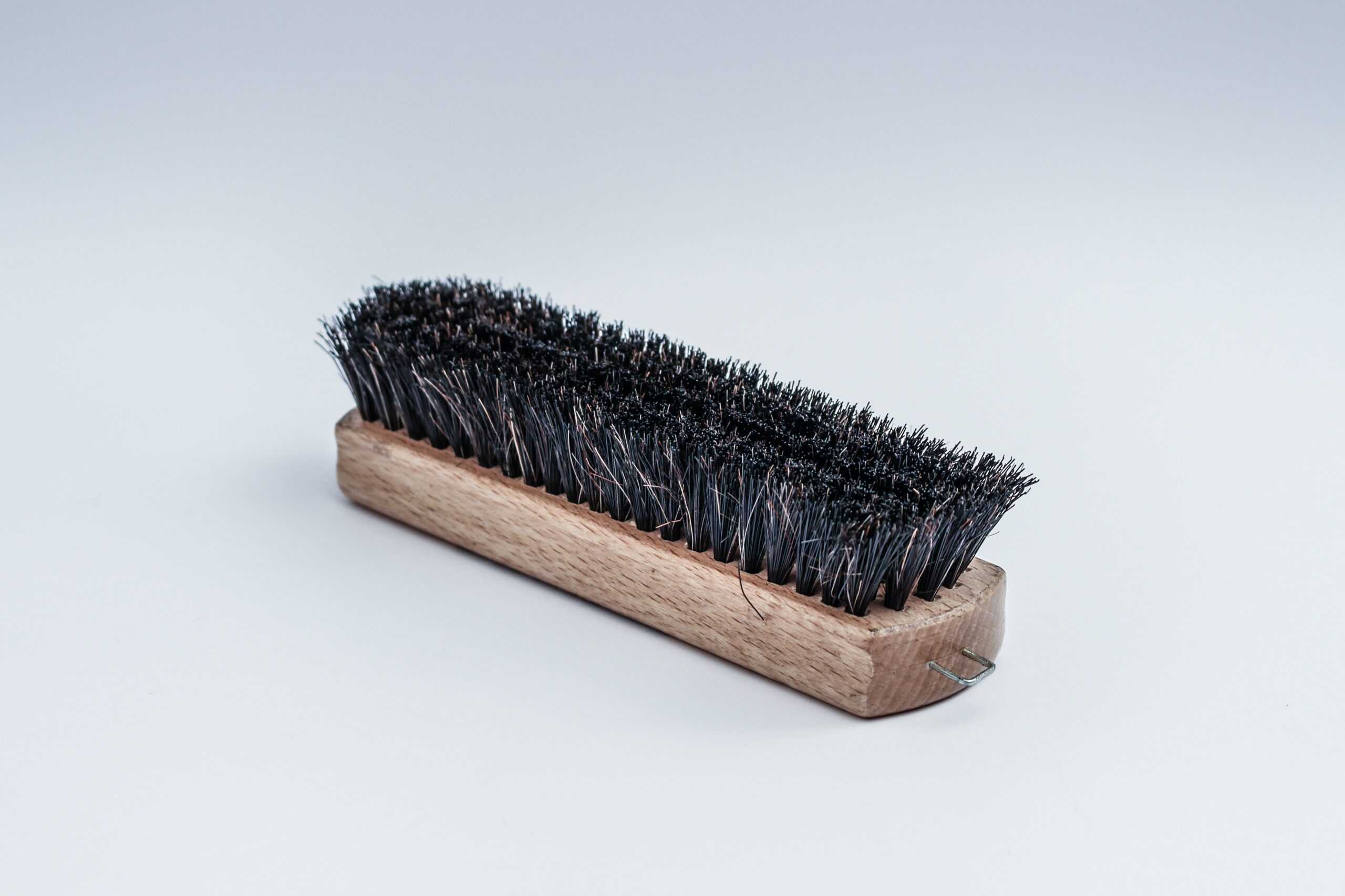
4. Broom or Stiff Brush
You also need a broom or a long-handled brush to scrub away the dirt and grime from your driveway. Make sure to use one that has stiff bristles to prevent splash-backs and effectively clean your surface.
When preparing to pressure wash using a broom or stiff brush, be sure to follow proper methods. Start by cleaning out any large debris such as twigs, leaves, and stones. Next, use a broom or stiff brush to scrub the driveway surface back and forth to remove any dirt or grime. Now you can start cleaning your driveway using your pressure washer.
5. Wear Safety Gear When Pressure Washing A Driveway
Pressure washing driveways can be dangerous. The high-pressure water can injure your eyes, hands, and feet. Make sure to wear a long-sleeve shirt, long pants, and rubber-soled shoes, as well as safety goggles, gloves, and hearing protection.
Safety gear should always be a top priority when power washing your driveway. The right protective equipment can make the difference between a successful and safe experience and a dangerous and harmful one. Investing in high-quality safety equipment can help protect you from potential injuries and keep you comfortable while performing tasks. Remember, safety comes first and enjoy spectacular results on your newly cleaned driveway!

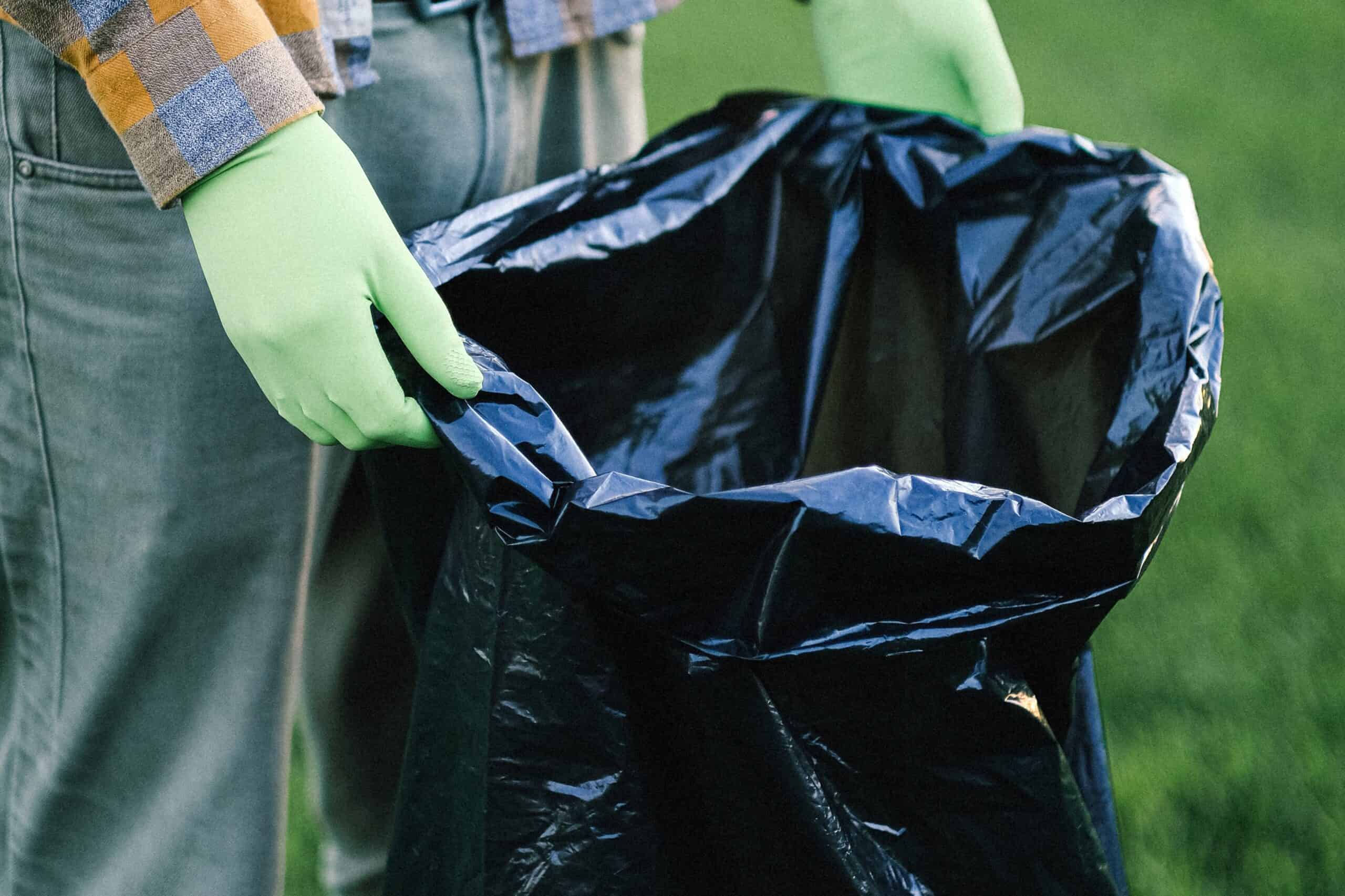
6. Plastic Sheets or Garbage Bags
Why do you need plastic sheets or trash bags to pressure wash your driveway? It’s simple: they help you control the spread of dirt and debris. When you pressure wash your driveway, dirt particles will fly around, potentially causing damage to your perfectly clean walls and the surrounding area. Using plastic sheeting or trash bags will help limit damage to the specific area you’re working in, making cleanup easier and quicker later.
Plastic sheets or garbage bags are used to protect other areas of your home while pressure washing the driveway.
7. Painter’s Tape
A painter’s tape will secure your plastic sheets so that water doesn’t seep into other areas of your home.
Painter’s tape is surprisingly easy to use. Just apply it to the areas you want to protect before you start pressure washing your driveway. You can also use it to create straight lines and shapes if you want to create designs or clean specific sections of your driveway more efficiently.
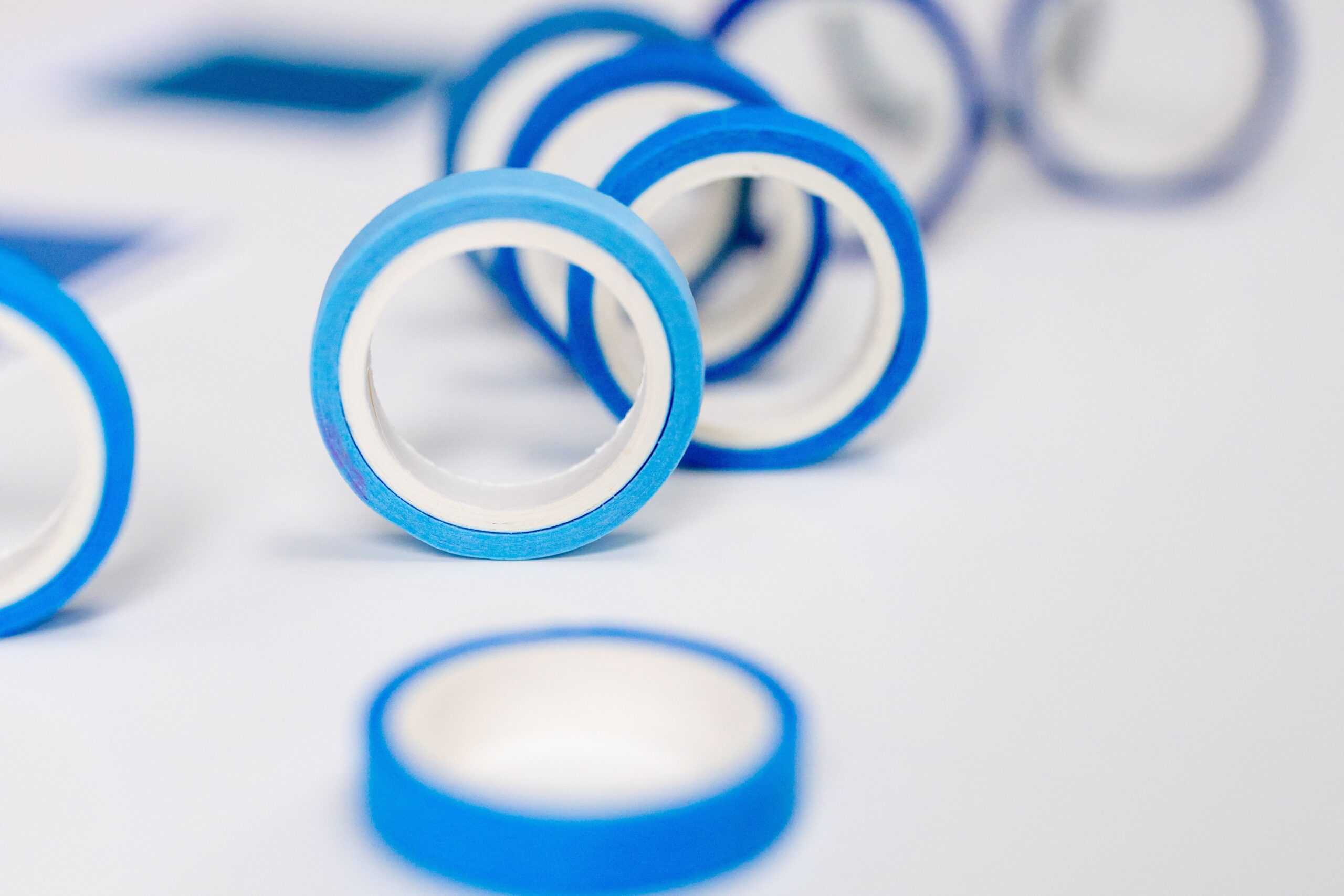
7 Easy Steps of Pressure Washing a Driveway
If you want to learn how to pressure wash a driveway, follow these 7 easy steps:
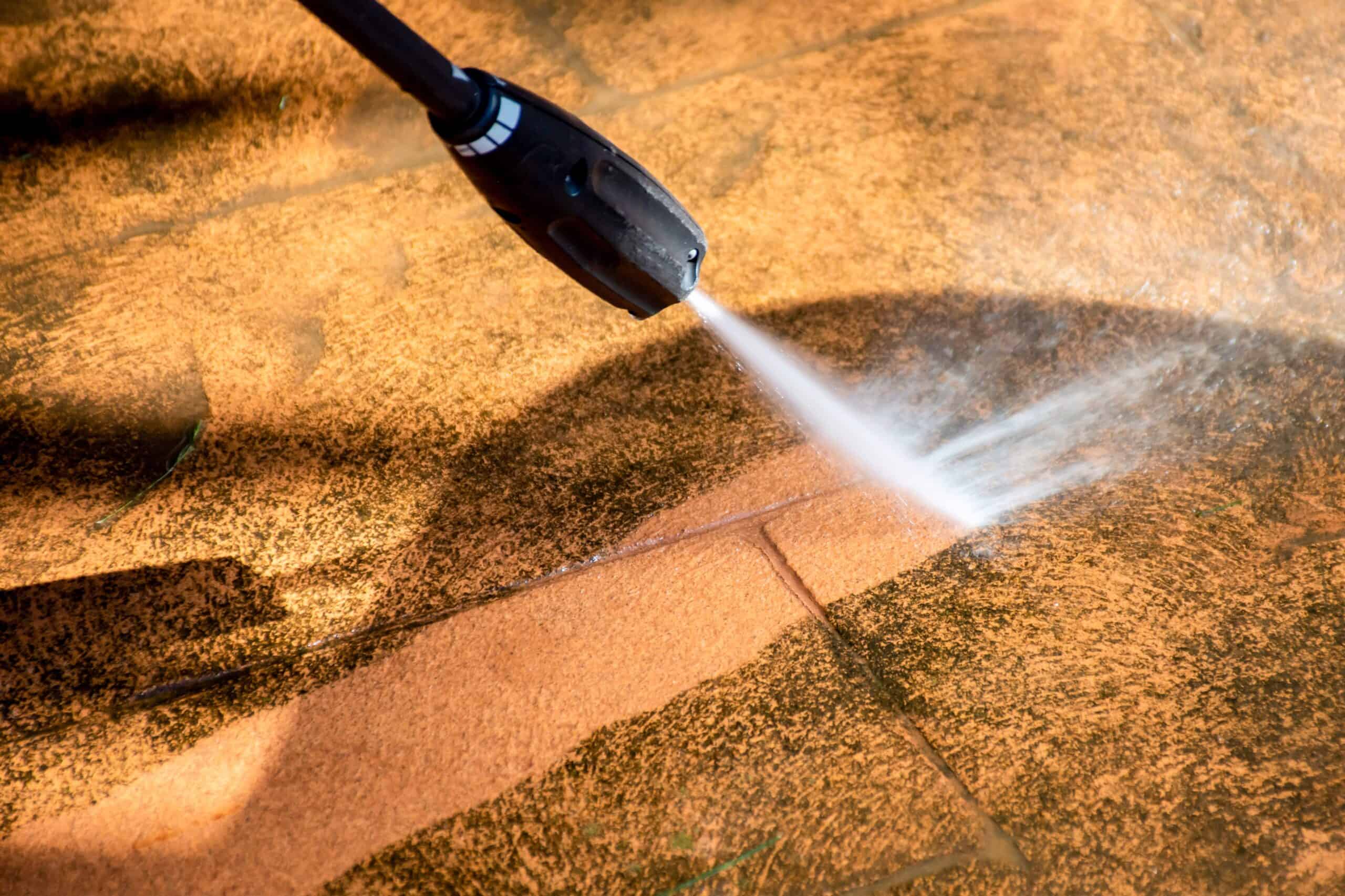
1. Clear the Surface
The first step is to prepare your driveway and surrounding areas for pressure washing. Clear away debris and items, and make sure to sweep away all excess dirt from the surface.
To start, you’ll want to remove any debris or dirt from the surface of your driveway. This can be done using a broom or leaf blower, depending on the size of the debris. You will need to be thorough during this process, as even small debris can affect the pressure washer’s effectiveness.
After removing larger debris, you’ll want to rinse the surface with a hose. This will help remove any remaining dirt particles and wet the surface, which will help maximize the effectiveness of the pressure washer. It is also important to ensure that any oil stains or other stubborn forms of dirt are removed before pressure washing. These areas may require specialized cleaning products or techniques, depending on the severity of the stain.
2. Protect Doors and Windows
Doors, windows, and other sensitive areas can become damaged as you pressure wash a driveway. Due to the pressure of the water, small rocks, debris, and other contaminants can be flung into the air and sent to different areas of your property.
Avoid this by covering windows, doors, and other sensitive areas with plastic sheets or garbage bags. Many beginners forget about this important precaution, but this is the best way to minimize any risk or damage as you pressure wash your driveway. Use painter’s tape to secure the sheets and prevent water from seeping into your home.
Protecting your doors and windows is an important step you shouldn’t overlook when pressure washing your driveway. Using plastic sheeting, sealing with silicone caulk, and removing moving objects are all important steps you can take to prevent water from entering indoor spaces and damaging your doors and windows. By taking these precautions, you can pressure wash your driveway without worrying about any negative effects.
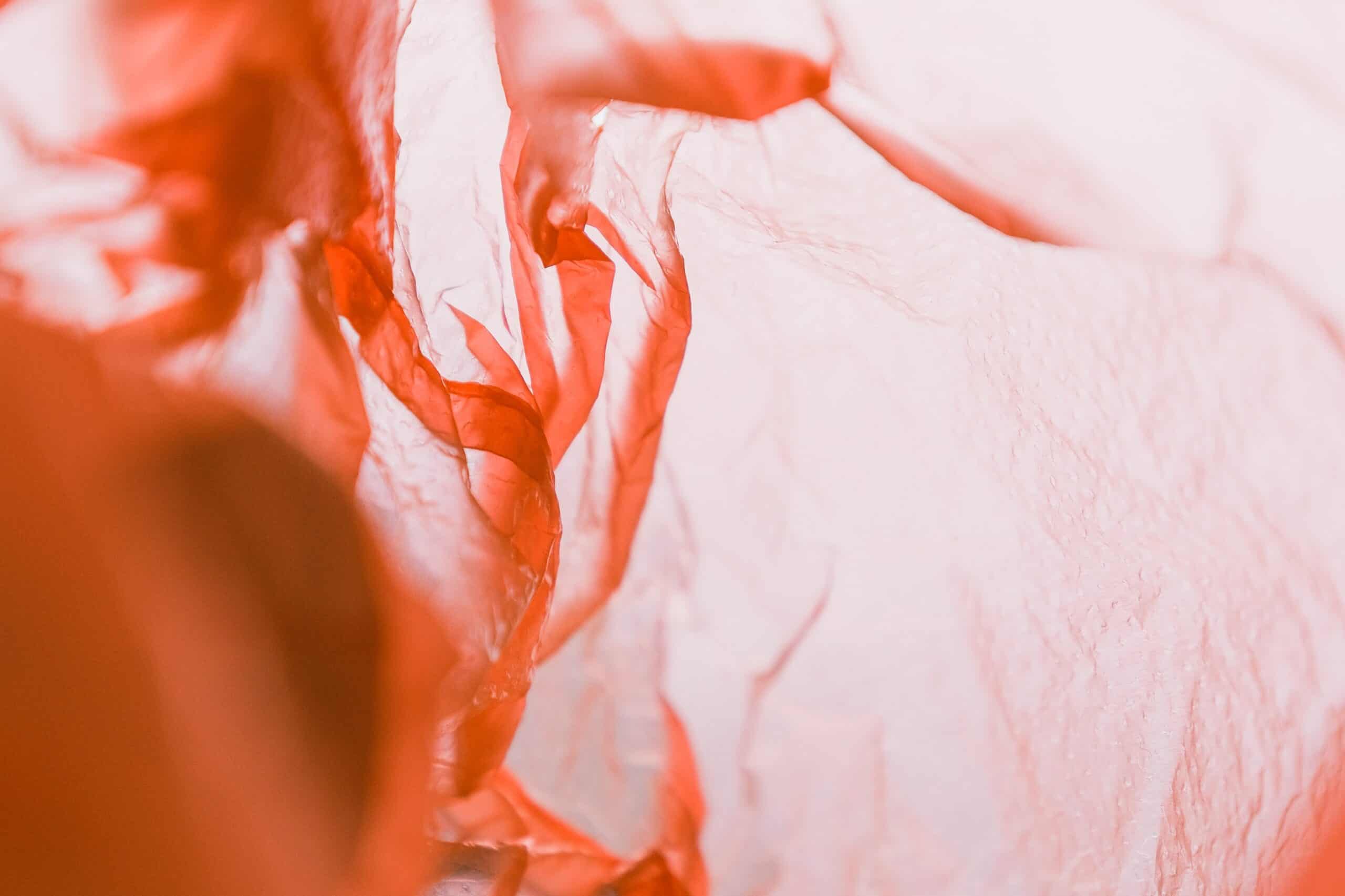
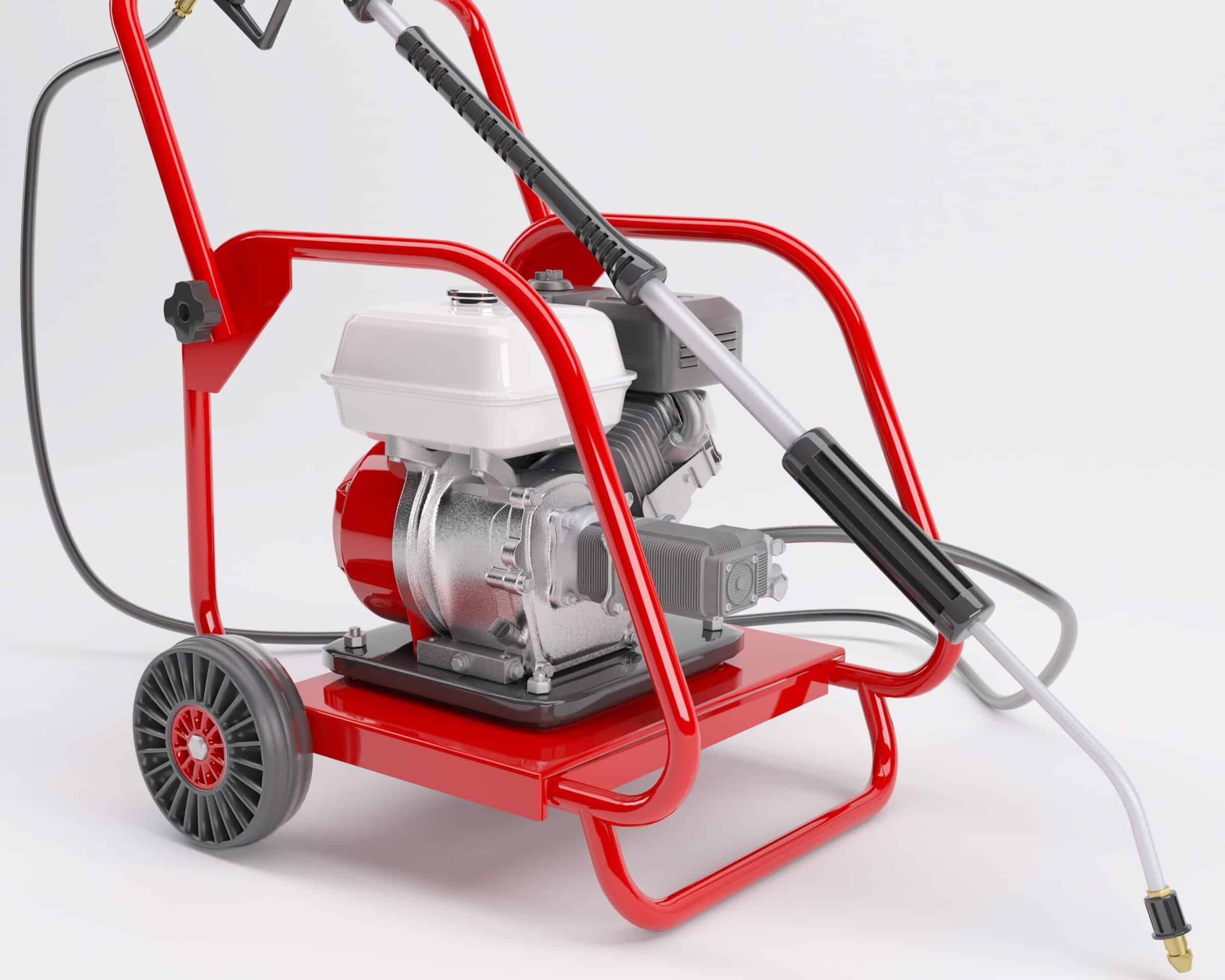
3. Assemble Pressure Washer
Step 1:
Unpack the pressure washer – The first thing you need to do is unpack your pressure washer and remove all the parts from the packaging. Make sure to keep everything organized and put all the pieces in a safe place so you don’t lose them.
Step 2:
Pipe connection – The next step is to connect the high-pressure hose to the pressure washer. Be sure to secure the hose securely to avoid leaks during pressure washing.
Step 3:
Connect the water supply – After installing the hose, you need to connect the water supply. Connect the water supply hose to the high-pressure washer. Be sure to install a water filter to avoid potential problems with sediment and dirt.
Step 4:
Attach the spray gun – Attach the spray gun to the pressure washer pipe and make sure it is firmly attached. Next, attach the high-pressure nozzle to the end of the wand.
Step 5:
Fill up the fuel tank – If you have a gas-powered pressure washer, you’ll need to fill up the fuel tank. Follow the manufacturer’s instructions carefully and make sure you are using the correct type of fuel.
Step 6:
Check oil level – Before starting the pressure washer, make sure the oil level is at the recommended level.
Step 7:
Turn on the pressure washer – Finally, turn on your pressure washer and run it for a few seconds to see if everything is working properly.
If everything goes well, you can start pressure washing your driveway.
There isn’t a single standard for pressure washers, so make sure to read your machine’s manual. It’s important to understand the power settings and other features of your pressure washer. If assembled or used incorrectly, the pressure washer could harm the surface of your driveway.
4. Wear Safety Gear When Pressure Washing A Driveway
Before starting the cleaning process, make sure that you are properly dressed and have the appropriate safety gear for pressure washing a driveway.
The most important safety equipment for pressure washing includes safety glasses to protect eyes from flying debris, gloves to ensure a secure grip and protect hands from chemicals, and non-slip shoes to prevent falls. Additionally, wearing a long-sleeved shirt, long pants, and a mask will provide maximum protection from chemical fumes and possible skin burns.
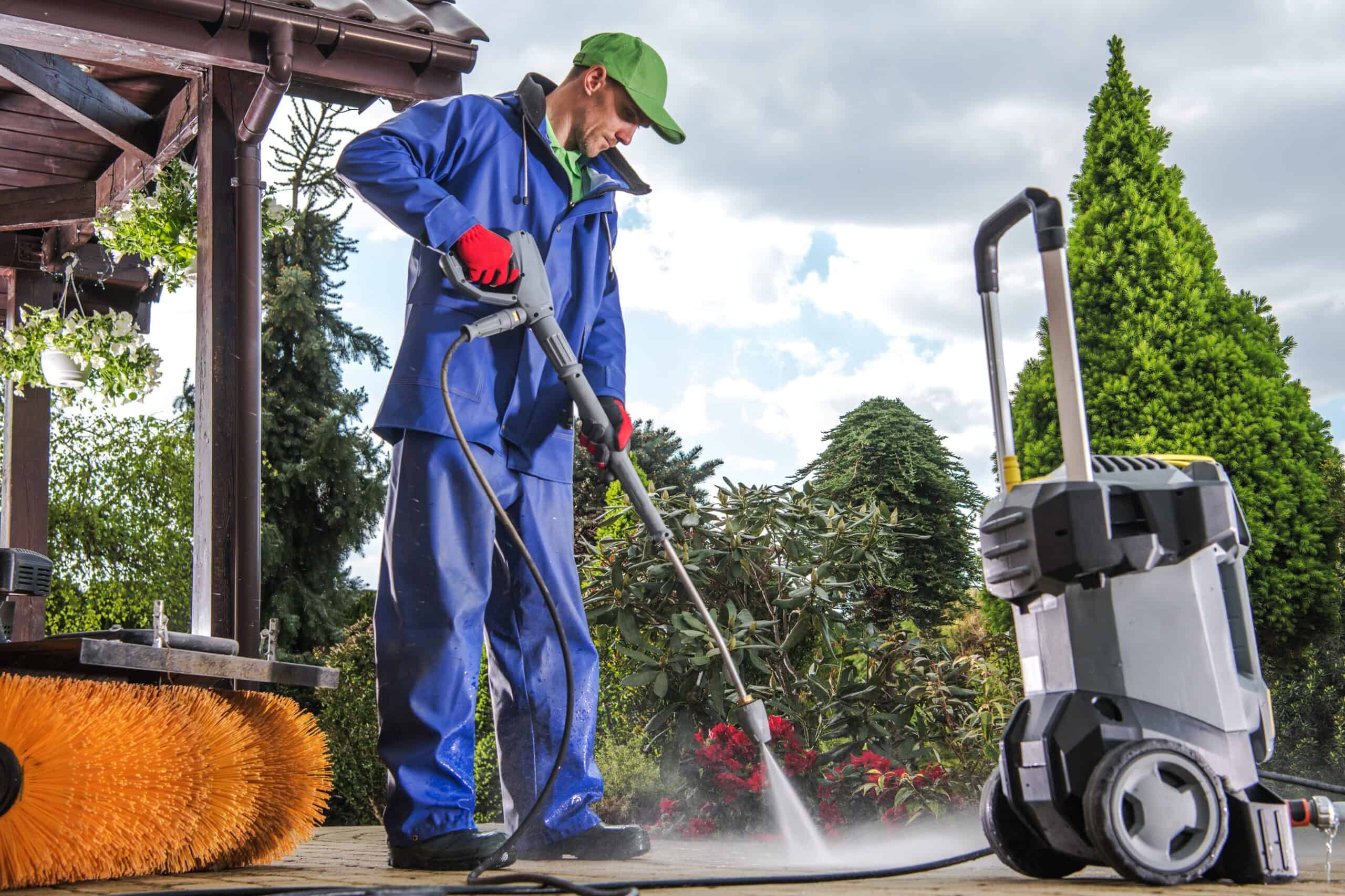
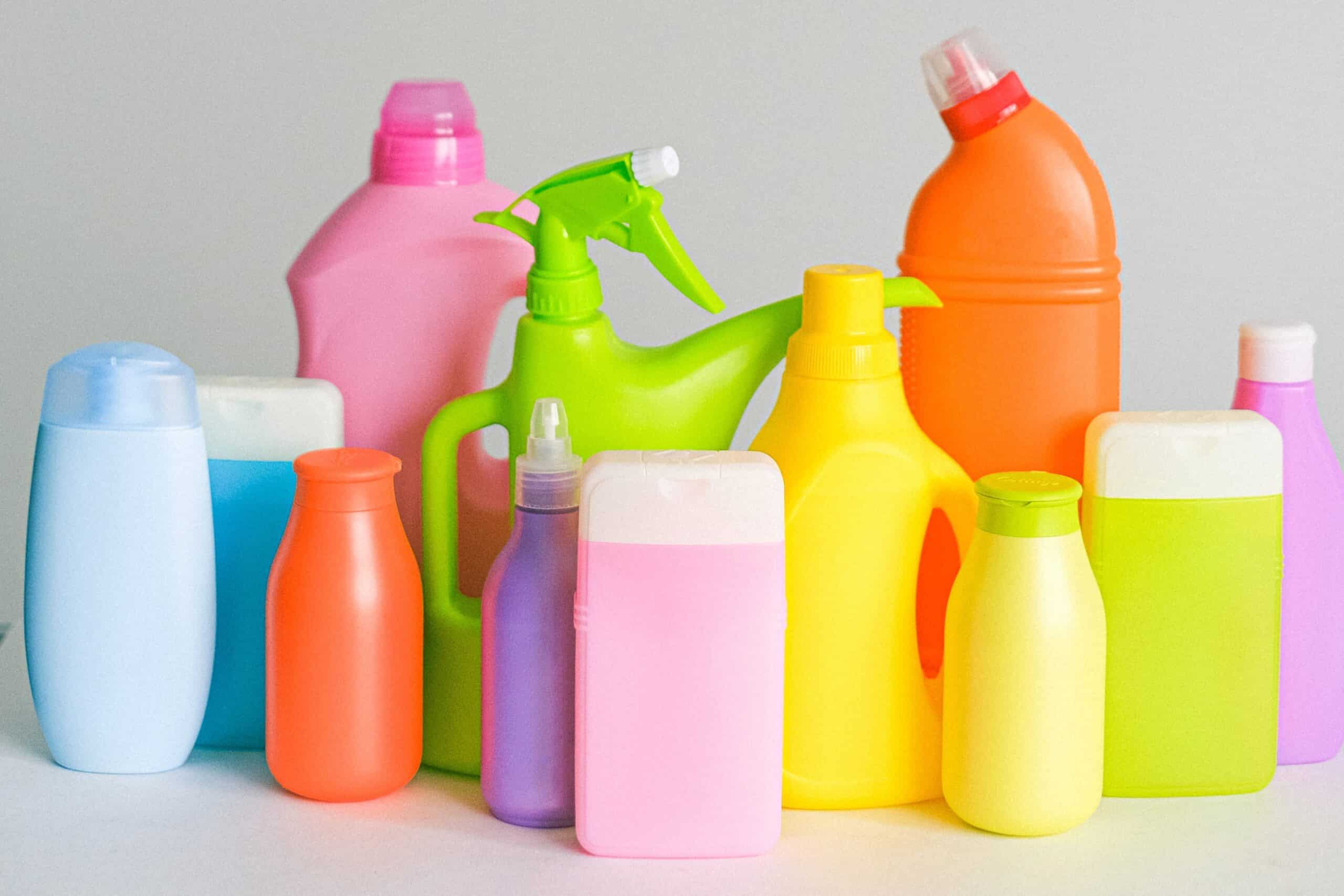
5. Apply Cleaning Agent
Apply your chosen cleaning agent to the driveway. This will help loosen up dirt, grime, and stains on the surface. If your pressure washer doesn’t have a brush attachment, use a broom to scrub the surface.
Using a cleaning agent when pressure washing your driveway is an important step that shouldn’t be overlooked. Breaks down and dissolves stubborn dirt, preventing future dirt buildup and extending the life of your driveway. When choosing cleaning products, it’s important to choose products that are safe for use in your driveway and to wear proper protective equipment when working with chemicals.
6. Pressure Wash Your Driveway
Now that everything has been prepared, it’s time to pressure wash your driveway. Hold down the spray handle, and move side to side across the surface of your driveway. Try to overlap each movement by about half a foot. Remember that proper techniques will vary depending on your pressure washer. When dealing with tough stains, you may have to hold your pressure washer closer to the surface.
Use a pressure washer to rinse off the solution, starting at one end of the driveway and working your way toward the other end, using even movements to ensure complete coverage.
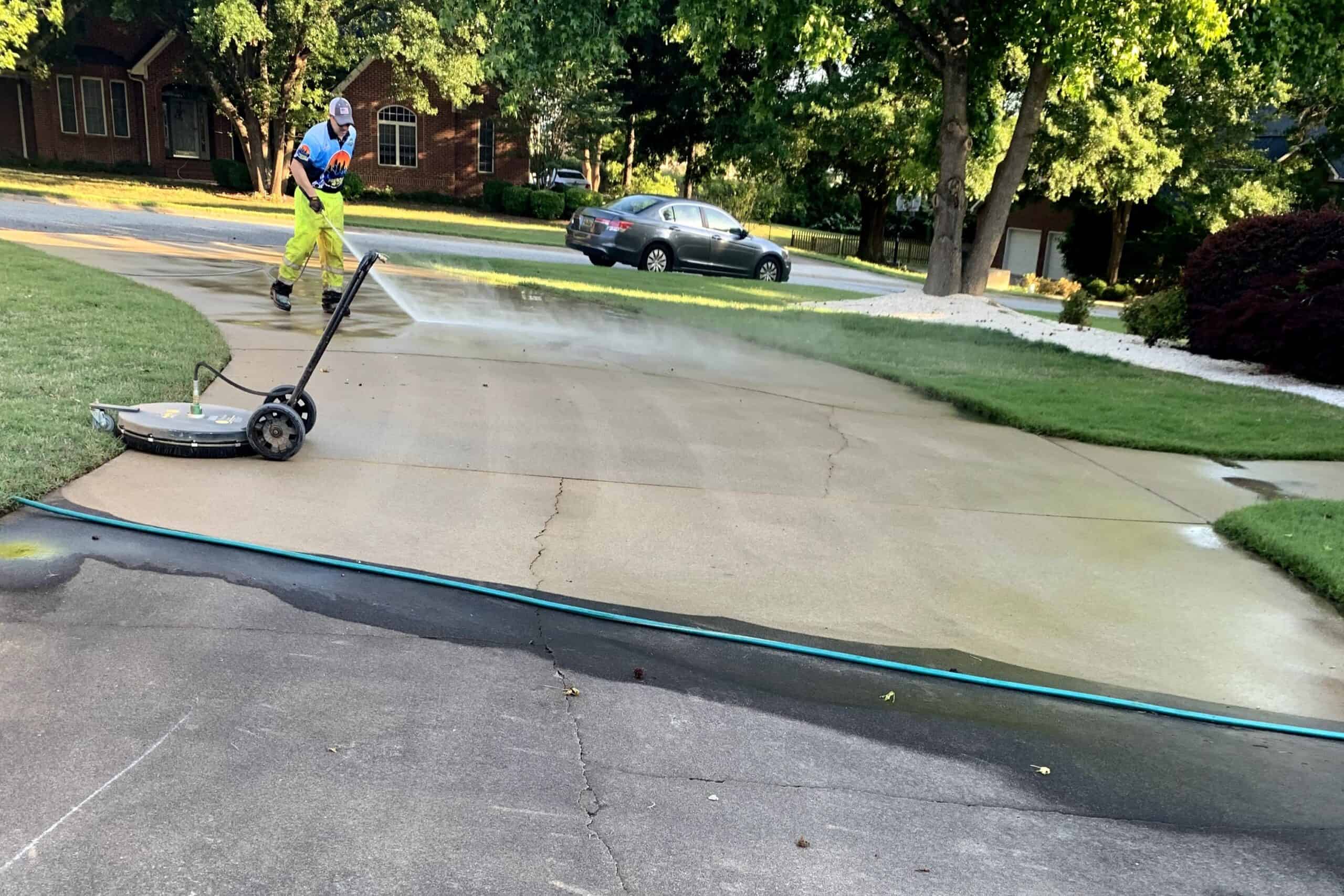
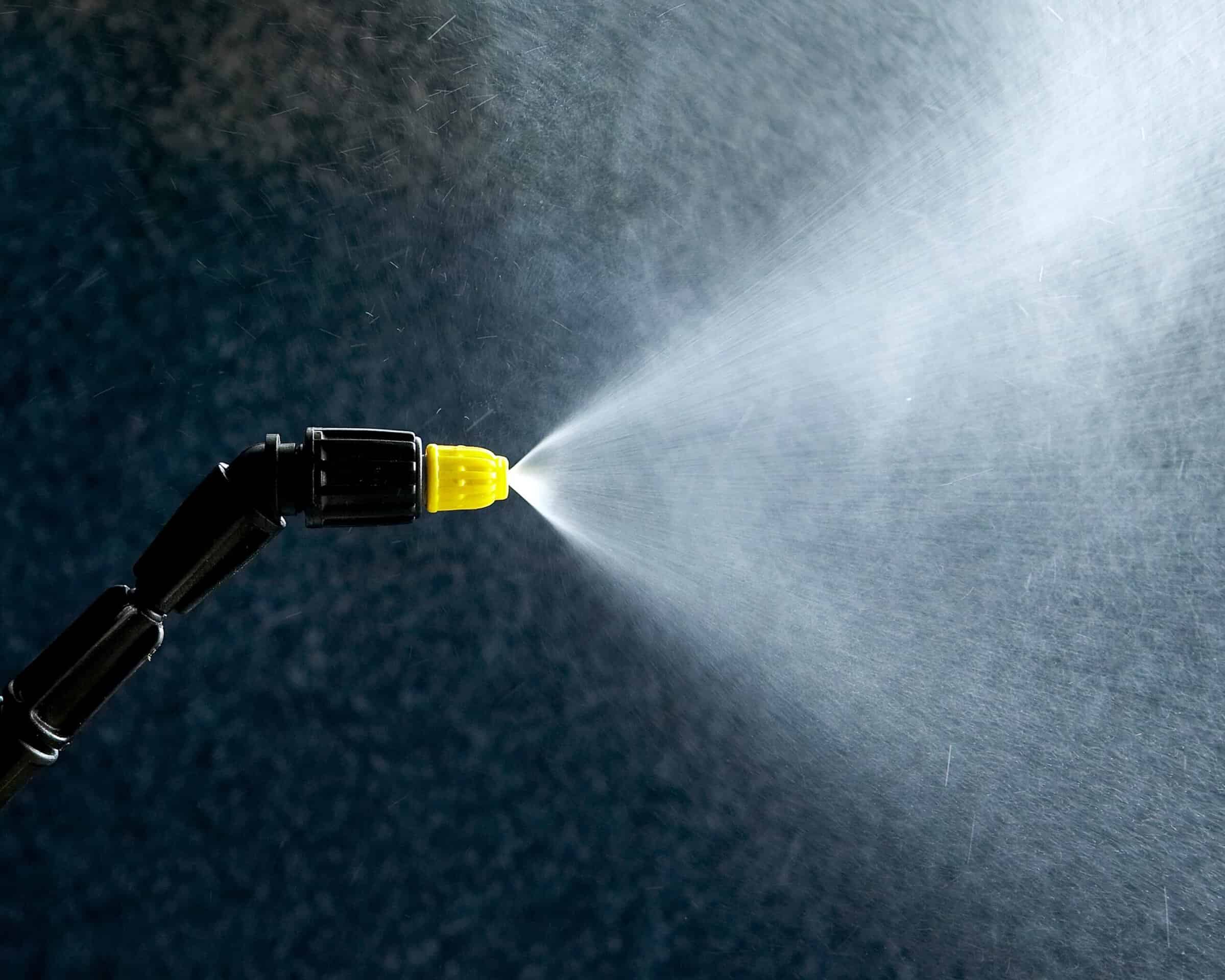
7. Rinse the Surface
Rinse your driveway to wash away leftover soap or detergent as well as remaining dirt and grime. Then, allow the surface to dry. You can apply a sealant to protect your driveway from future stains.
Pressure Washing A Driveway: Tips to Remember
It may seem easy to pressure wash driveways by yourself but to do it correctly, you need skill and experience. As a beginner, you’re likely not familiar with all the intricacies involved with pressure washing a driveway. Not only can you damage your driveway, but you can also cause serious harm or injury. Here are some pressure washing driveway tips to keep in mind.
1. Start with a low PSI when pressure washing a driveway.
You may be surprised at the power of pressure washers when it comes to spraying water. If you start out with a high PSI, you can easily lose control of the pressure washer. The spray is strong enough to cause wounds or damage property. Though a low PSI will be less effective in cleaning your driveway, this will give you enough time to adjust to the pressure washer.
Starting with a low PSI will give you a feel for how the pressure washer will perform before increasing the output. This allows you to adjust the spray pattern and distance from the surface to prevent accidental damage. It also helps prevent potential safety hazards that can result from unexpected recoil if the beam is too strong.
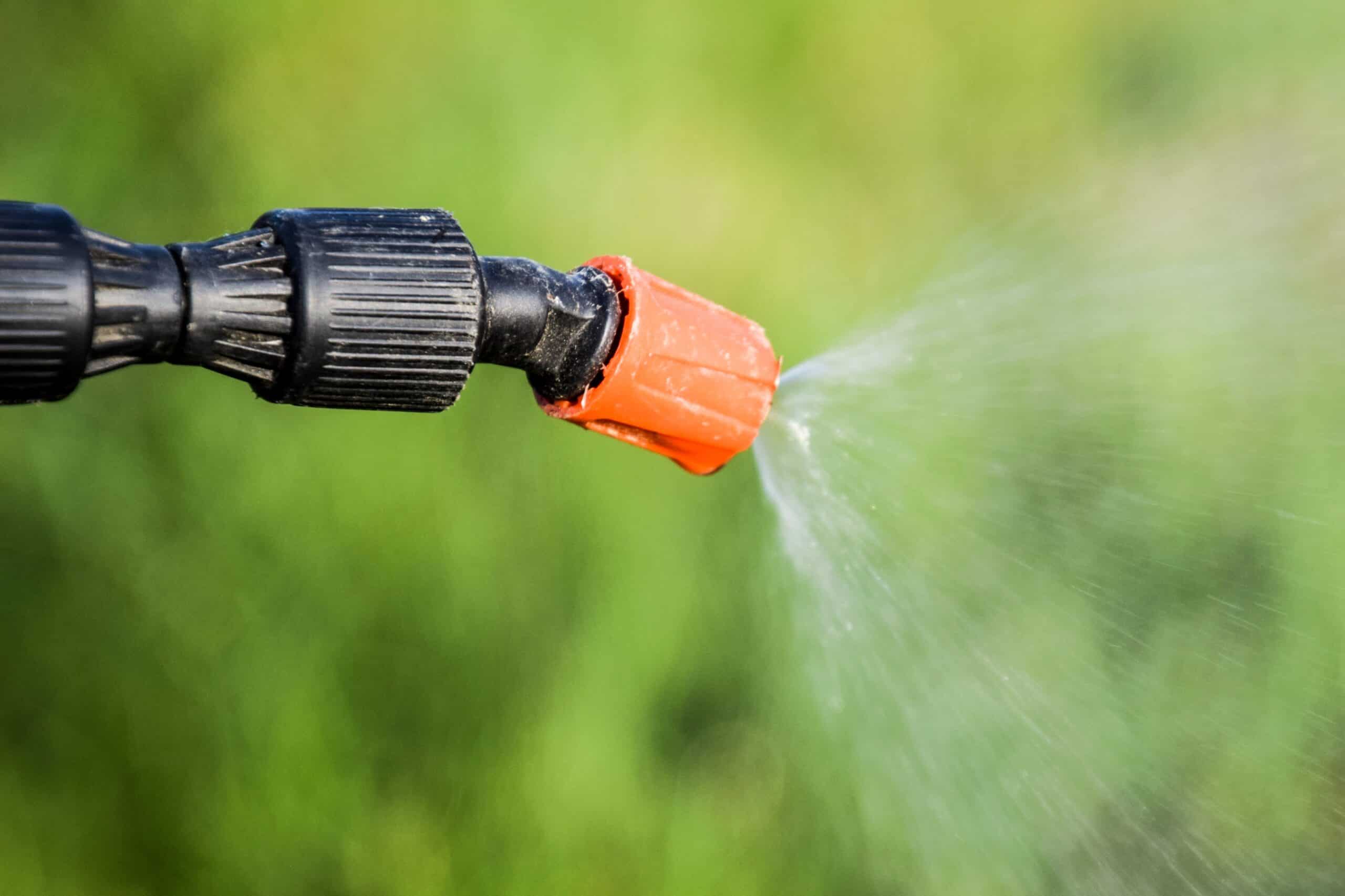
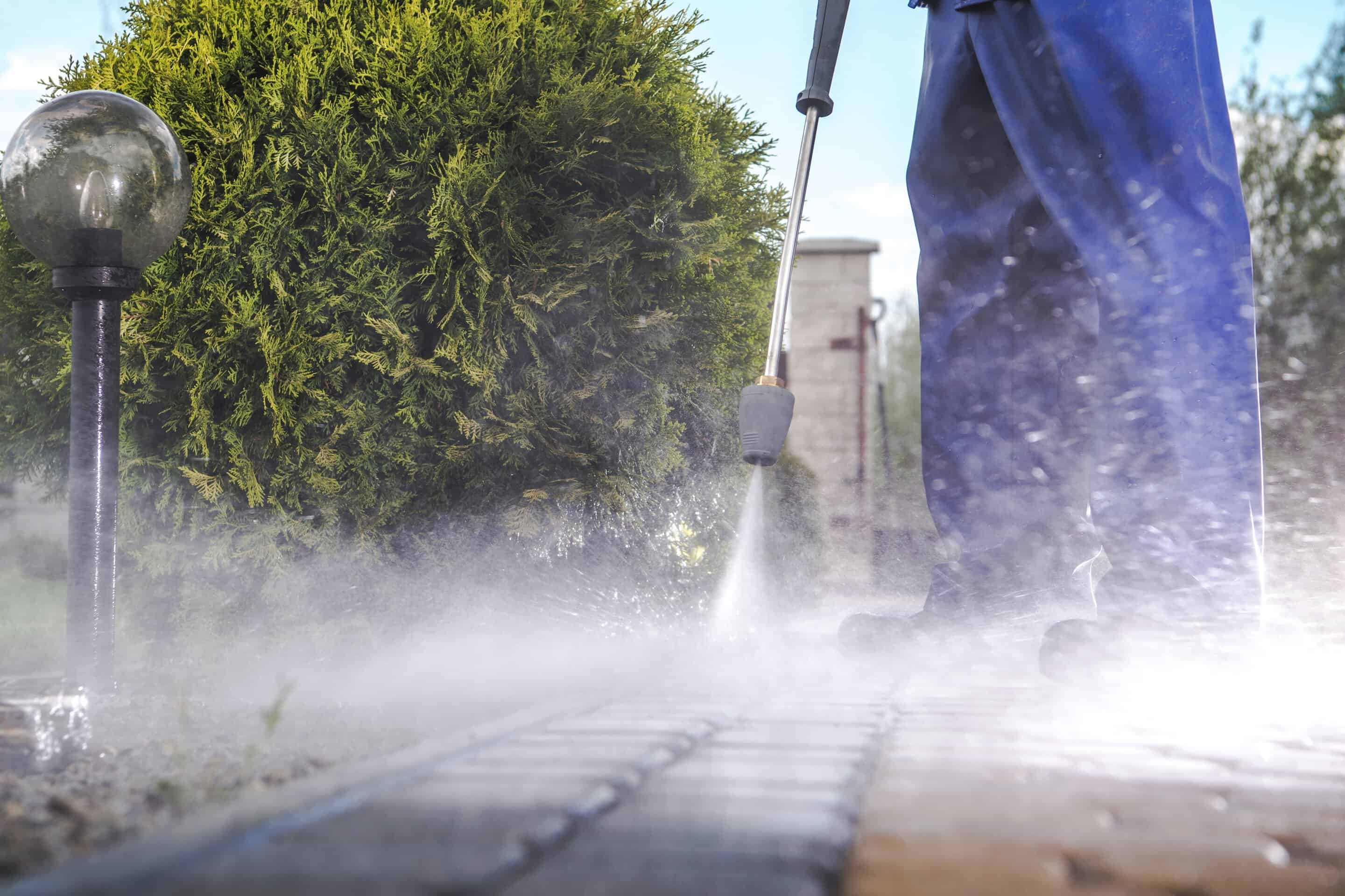
2. Never point the pressure washer at yourself or at other people.
The force of a pressure washer nozzle is strong enough to cause serious injury, whether by direct contact or by bouncing off the surface. A high-pressure jet can penetrate the skin, causing tears, bruising and even broken bones. It can also damage delicate tissues such as the eyes, ears and nose, leading to temporary or permanent blindness, hearing loss or breathing problems.
Always point the pressure washer wand downward. If you are not operating the pressure washer, make sure the wand is secure. A small accident or slip can turn on the machine and cause serious damage. Also, do not fire the jet at an angle greater than 45 degrees. Otherwise, water may penetrate the surface and cause damage. We also recommend avoiding using a pressure washer on surfaces that may flake or fly off, such as pebbles or gravel.
3. Do not use a gasoline-powered pressure washer in enclosed spaces.
Gasoline-powered pressure washers emit carbon monoxide, so it should only be used in well-ventilated areas. Carbon monoxide poisoning can be fatal in a matter of minutes.
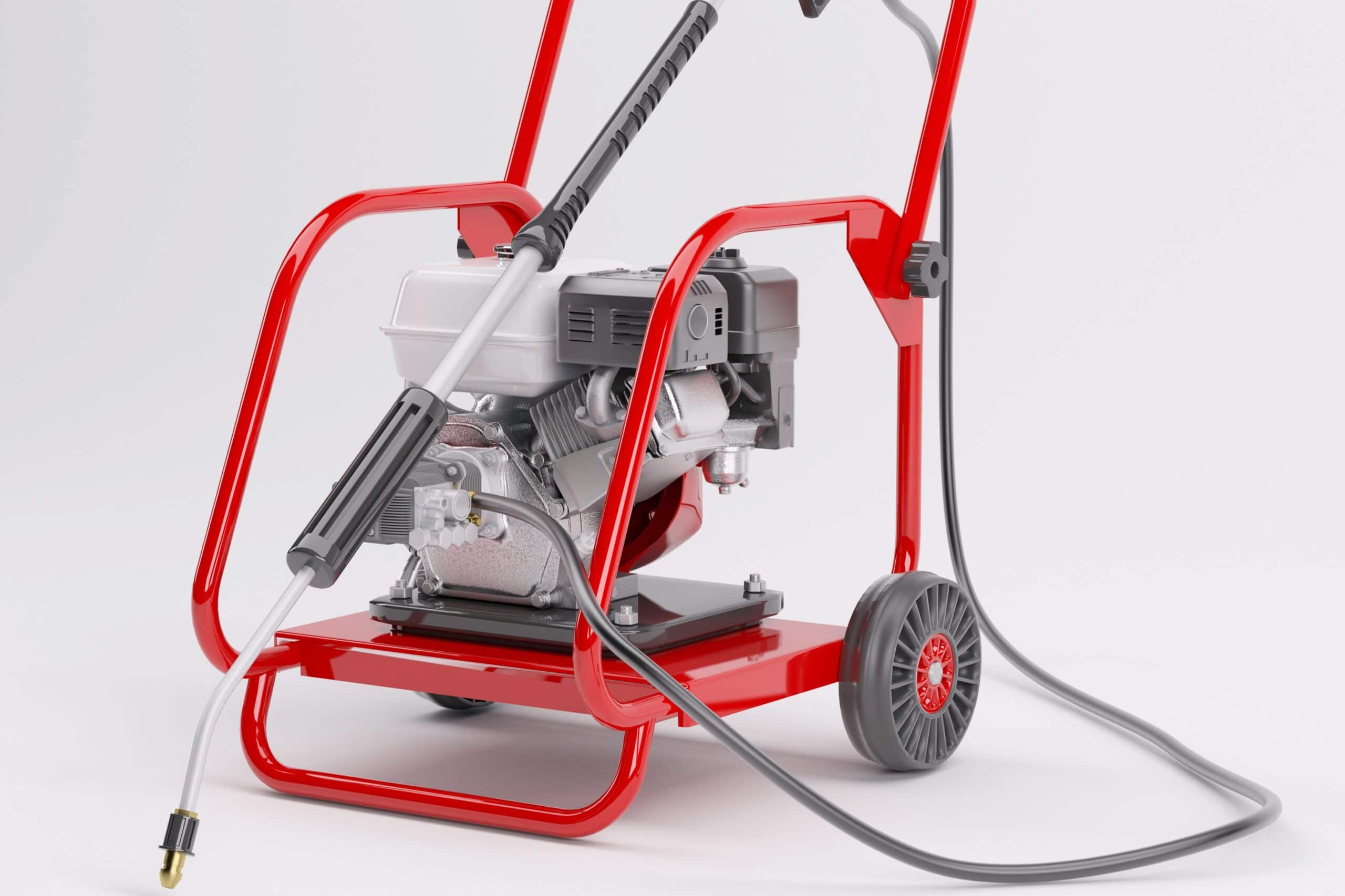
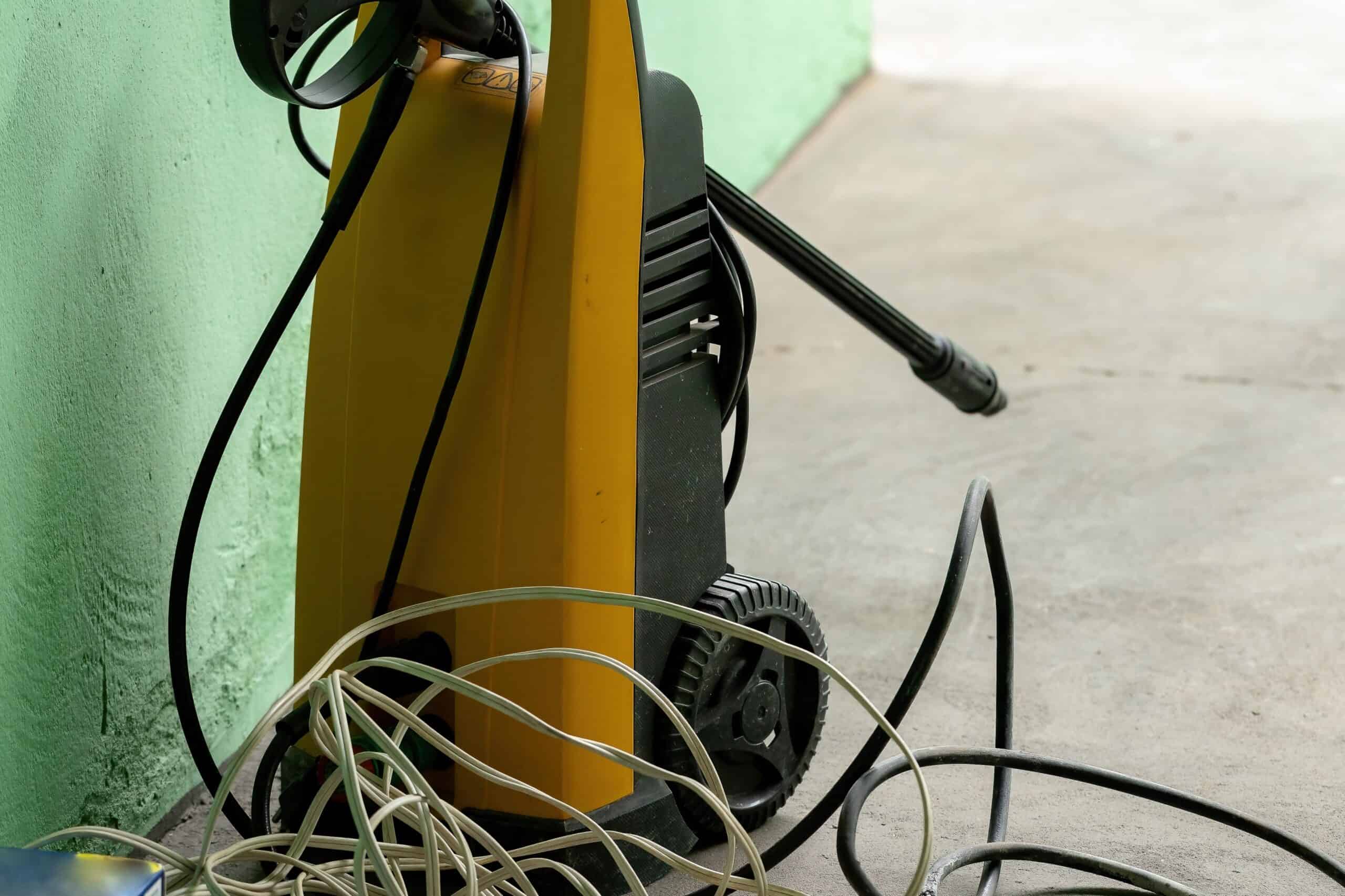
4. Keep the power cord and/or extension cord far away from water.
You should use a GFCI (Ground Fault Circuit Interrupter) outlet when using a pressure washer. This type of outlet is designed to protect against electric shock by shutting off power when a change in electrical current is detected, such as when water comes into contact with the power cord. In addition to using a GFCI outlet, it is important to keep the power cord and/or extension cord away from any water sources while pressure washing. This includes not only the driveway surface that needs to be cleaned, but also any nearby sprinklers or hoses that could be used.
If you have to use a power cord or an extension cord, make sure it’s as far away from the driveway as possible. Avoid placing it in areas where water runoff can reach. If possible, use a heavy-duty extension cord that is properly grounded.
5. If you are unsure, don’t hesitate to contact a professional pressure washing driveway service .
While going the DIY route might seem like a more economical choice, there are a lot of risks involved in pressure washing a driveway. If you don’t think you will be able to do this correctly, it might be better to use a professional pressure washing service.
By hiring a professional pressure washing service, you can ensure your driveway is thoroughly cleaned, safely and effectively. A professional pressure washer has the expertise, experience, and equipment needed to remove stubborn stains and dirt without damaging your driveway. We also use eco-friendly cleaning products that are kind to your driveway and the environment.
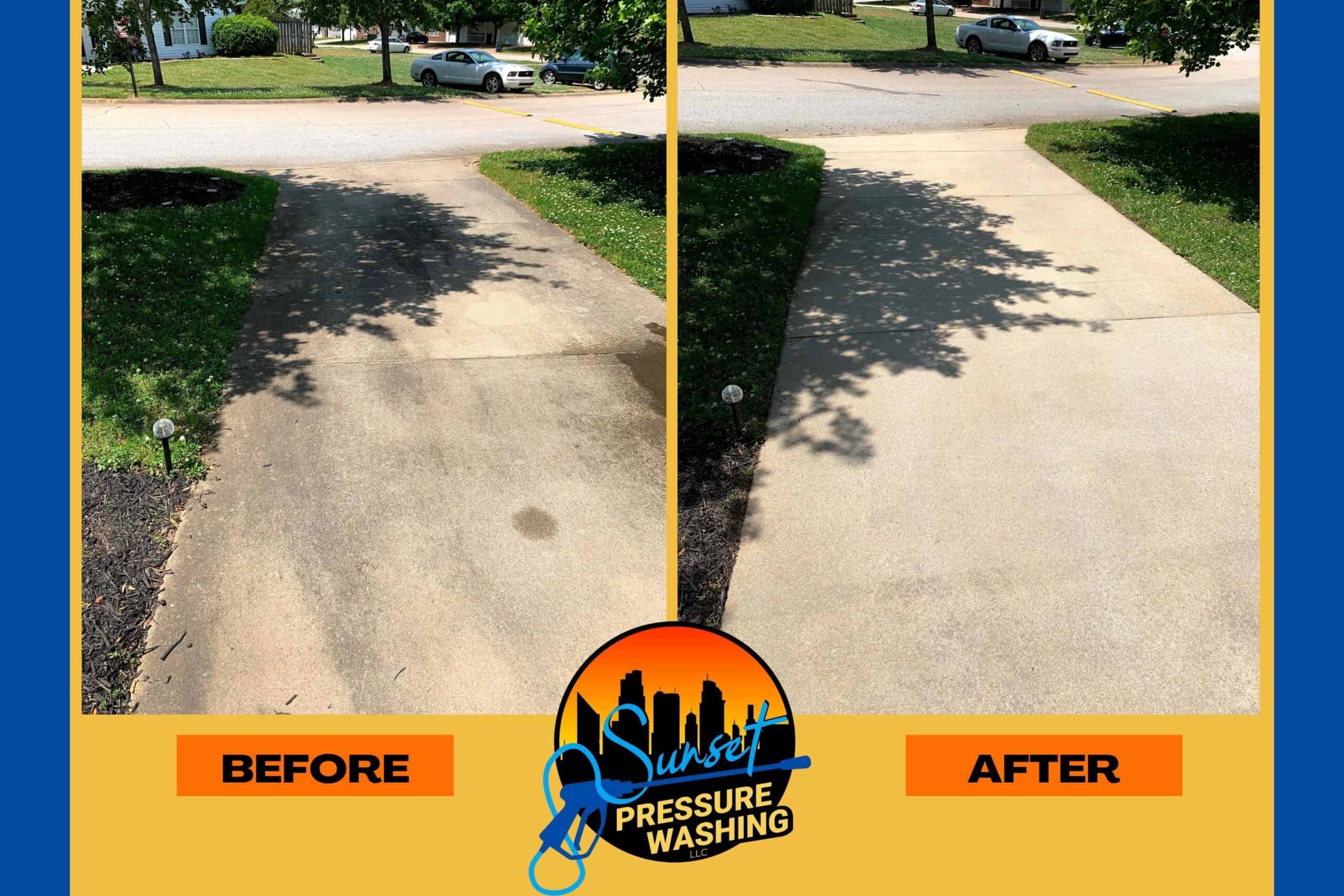
Reasons to Consider Professional Pressure Washing A Driveway
Here are some great reasons for professional driveway pressure washing:
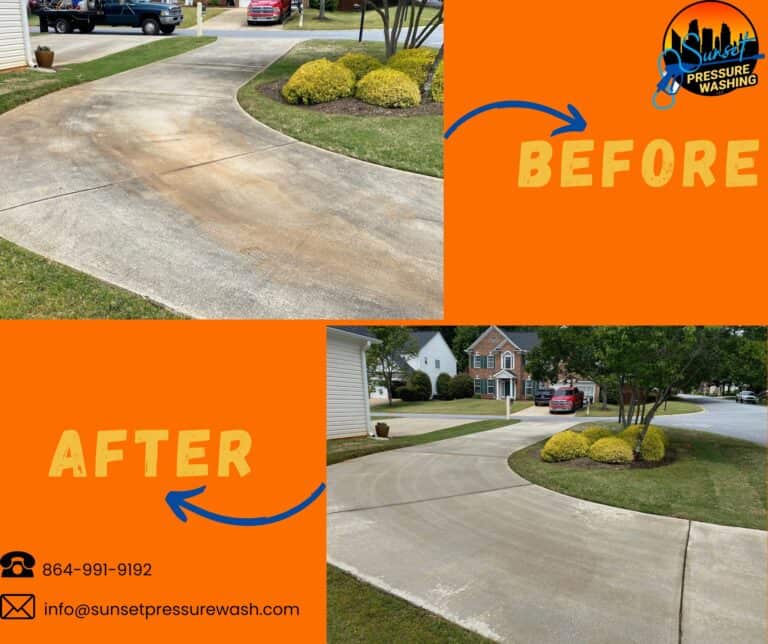
1. Experience and Expertise
A professional pressure washing company will know how to effectively clean your driveway as well as other parts of your house.
Their expertise and knowledge allow them to provide the best possible cleaning solution for your unique needs, giving you peace of mind and a cleaner, healthier living environment.
2. Professional-Grade Equipment
Unlike consumer pressure washers that you can rent or buy at a hardware store, professional equipment is more powerful and efficient.
They have high-quality pressure washers, environment-friendly cleaning products, and other tools needed to clean your driveway. To even come close to what the professionals are using, you will have to spend a lot of money.
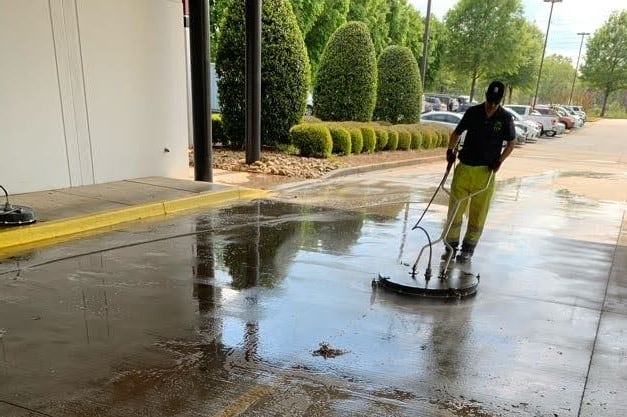
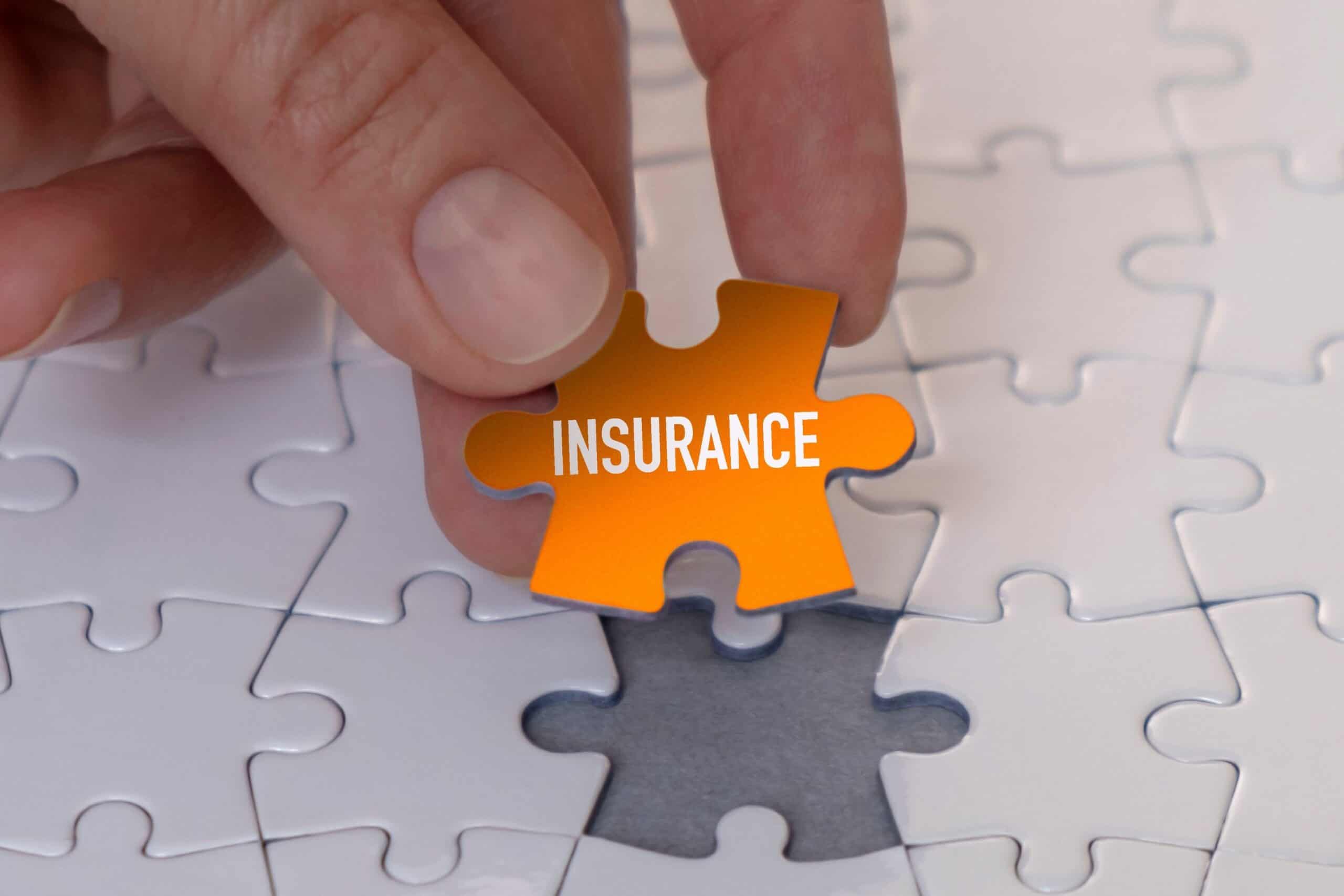
3. No Damage or Injury
Professional pressure washers won’t cause any damage to your property or injure anyone while cleaning your driveway. Even if they make mistakes, they are fully insured and can compensate you for damages.
4. Saves Time and Energy
Pressure washing a driveway is very time-consuming. If you’re a beginner, it’s possible that you may not achieve the results you want on the first try. Thus, you’ll have to repeat the whole process. Have a professional crew take care of your driveway so you can enjoy your hard-earned weekend.
5. Cost-Effective in the Long Run
Given all the risks of DIY pressure washing, professional pressure washing might be more cost-effective in the long run. If you end up damaging your driveway, doors, or windows, you’ll end up having to spend more on repairs.
Considering the cost-effectiveness of a professional pressure washing service can pay off in the long run, keeping your property in pristine condition. Doing it yourself may seem like a cheaper option, but investing in professional services will ultimately pay off in more ways than one.
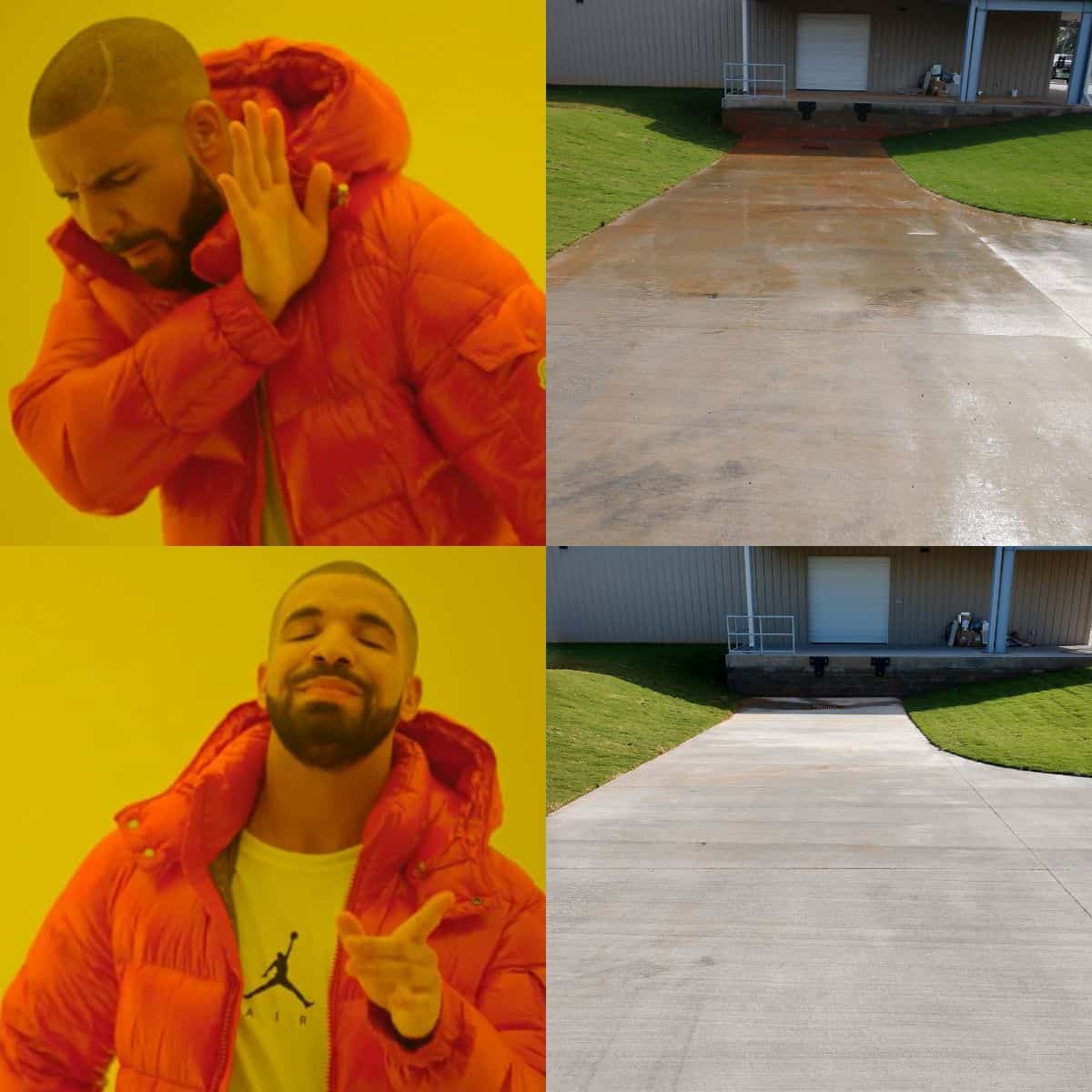
Pressure Washing a Driveway? Don't Let It Stress You Out
It’s normal for your driveway to have some wear and tear. However, if you want to extend its life, regular maintenance is crucial. Driveway cleaning with pressure washing allows you to blast away all the dirt, grime, and stains on the surface, keeping it looking fresh and well-maintained.
Don’t let the thought of pressure washing your driveway stress you out. Let Sunset Pressure Wash solve that problem for you. Our team of experts use top equipment and techniques to ensure your driveway always looks like new. Additionally, pressure washing not only looks good, it also helps maintain the integrity of your driveway by removing dirt, grime, and grease buildup that can cause damage over time. By calling Sunset Pressure Wash, you can rest easy knowing that your driveway is in good hands. Your driveway (and your wallet) will thank you.
If you’re a beginner looking to pressure wash a driveway, there’s no need to fret. As long as you follow this beginner’s guide, you’ll be able to clean your driveway without any stress. If you’re hesitant, though, don’t hesitate to give us a call. We can restore your driveway and have it look almost new. Explore power washing in Columbia SC, Duncan SC, Greenwood SC, and other parts of South and North Carolina to find expert services that will leave your driveway spotless and rejuvenated.
